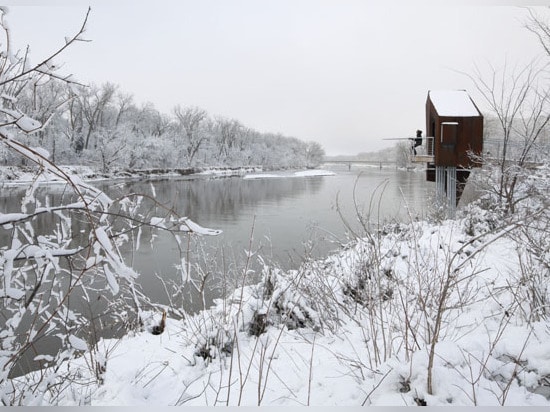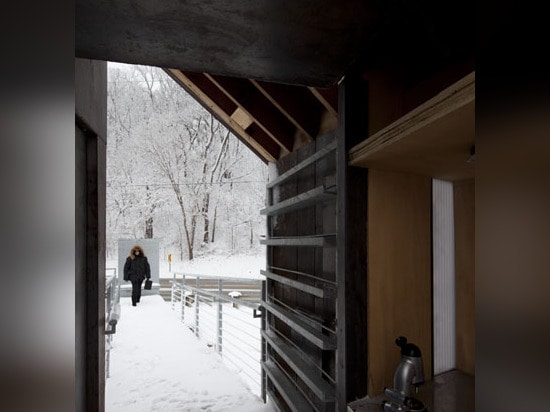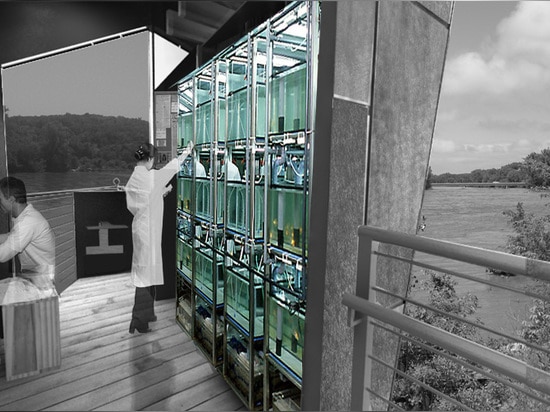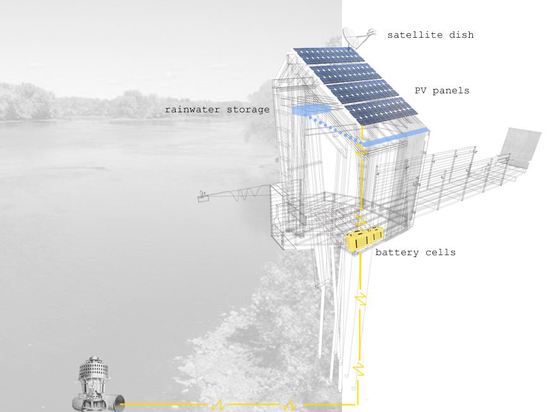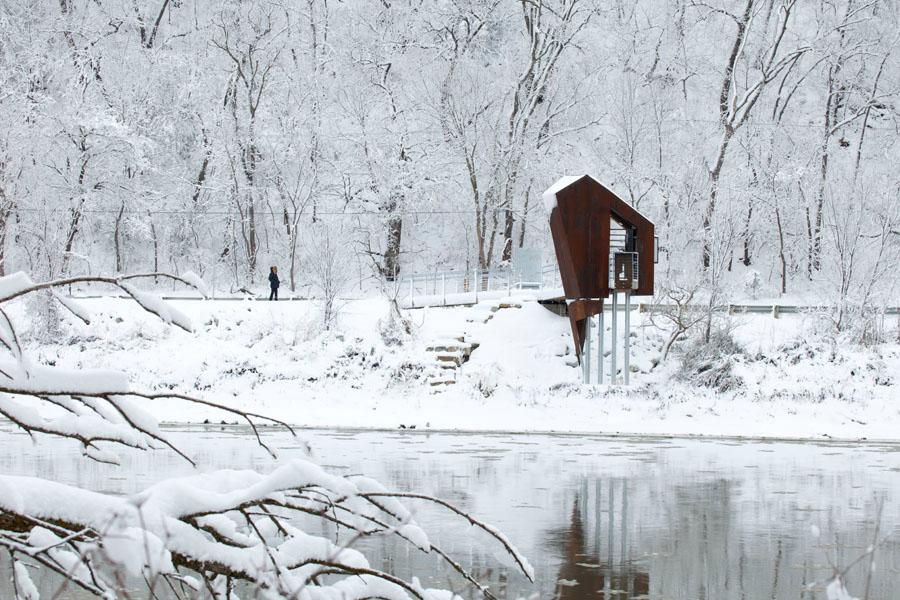
#PUBLIC ARCHITECTURE PROJECTS
River Probes
Seven rivers wend their way across Nebraska toward the Missouri River. Pollutants in the rivers have led the University of Nebraska at Omaha to construct research stations on their banks to monitor and study their contamination.
The first station, designed by local architect Randy Brown, has been constructed as a pilot project, a tiny morsel of a building on the Elkhorn River. The architect answered some questions about his design of the rusty research station.
What were the circumstances of receiving the commission for this project?
It was a response to an RFP from the University of Nebraska.
Can you describe your design process for the building?
The project required numerous approvals to build in a river. We worked with the NRD (Nebraska Resources District) a governmental agency that manages the watersheds in Nebraska. A no-rise certification was required, which lead us to the solution of eight steel columns 2-1/2" in diameter to hold up the building. The structure was required to be constructed outside the 100-year flood plain. The structure needed to be ADA compliant. These forces shaped the design.
How does the building compare to other projects in your office, be it the same or other building types?
The “river probes” project is part on our ongoing research/building in the heartlands. Inspired by the local building traditions and culture, the work attempts to express architecture of our time and place. Call it critical regionalism, call it rural funk, call it rusted objects in the landscape, call it what you will – it is building connected to land, connected to the culture and connected to the future.
How does the building relate to contemporary architectural trends, be it sustainability, technology, etc.?
This project continues our exploration into activism in architecture - the teaming up with a group that is interested in changing the world. The river probes are used by scientists as research stations to study the affects of pollution on our waterways. With a better understanding of water quality and pollution effects, the scientists are determined to reduce the amount of pollutants in the waterways, creating a healthier environment for the residents of Nebraska and downstream.
Are there any new/upcoming projects in your office that this building’s design and construction has influenced?
Our current work is on a rural farmhouse that is modern and fluid, connected to the land and built with local materials.
